Coco Peat is generally a growing medium made from the husks of coconuts. It looks like soil but is quite different. Coco Peat is lightweight, has good water retention, and is an excellent growing medium for plants. Coco Peat has many uses, such as gardening, horticulture, and hydroponics. It can also be used as a soil amendment or potting mix. This article explains how to make Coco Peat at home and gives tips on using it.

How to make Coco Peat at home
What is Coco Peat?
Coco Peat, also called coir pith or coir fiber pith, is a by-product of the processing of coconuts. It is a natural, organic material used as a growing medium for plants. Coco Peat is made up of the finely ground processed husks of coconuts. The husks are soaked and squeezed to remove the excess water. The resulting material is then sun-dried and turned into Coco Peat blocks.
Coco Peat has many benefits as a growing medium. It is an excellent alternative to peat moss extracted from sensitive ecosystems and is not a renewable resource. Coco Peat is also much more absorbent than peat moss, holding up to eight times its weight in water. This makes it an ideal growing medium for plants that require a lot of moisture, such as tropical plants. In addition, Coco Peat helps to aerate the soil and improve drainage. It also has a high cation exchange capacity, which means it can hold onto nutrients and make them available to plants over time.
What is the ratio of Coco Peat and soil?
The three primary ratios of Coco Peat and soil are often used in gardening and agriculture. They are:
- 1:1 – This is the most common ratio for general use. It is a good balance of Coco Peat and soil that can be used for most plants.
- 2:1 – This ratio is often used for plants that require more drainage, such as succulents. The higher Coco Peat content helps to keep the soil loose and drains excess water more effectively.
- 3:1 – This ratio is typically used for plants that need even more drainage, such as cacti. The very high Coco Peat content ensures that the soil stays loose and drains water quickly.
To directly apply Coco Peat into the garden, Coco Peat must be mixed with soil in a 3:1 ratio (3 parts of soil:1 part of Coco Peat).
How do you treat Coco Peat before planting?
Cocopeat is a versatile growing medium that can be used for various plants. Before planting, it is essential to treat the Coco Peat to ensure that it is properly aerated and has the correct pH level for your plants.
To aerate Coco Peat, fluff it up with your hands or a fork. This will help to improve drainage and prevent roots from becoming waterlogged. You can add perlite or vermiculite to Coco Peat to improve aeration further.
In case you missed it: How to Identify and Control Blight on Plants: Causes, Treating it Organically and Chemically
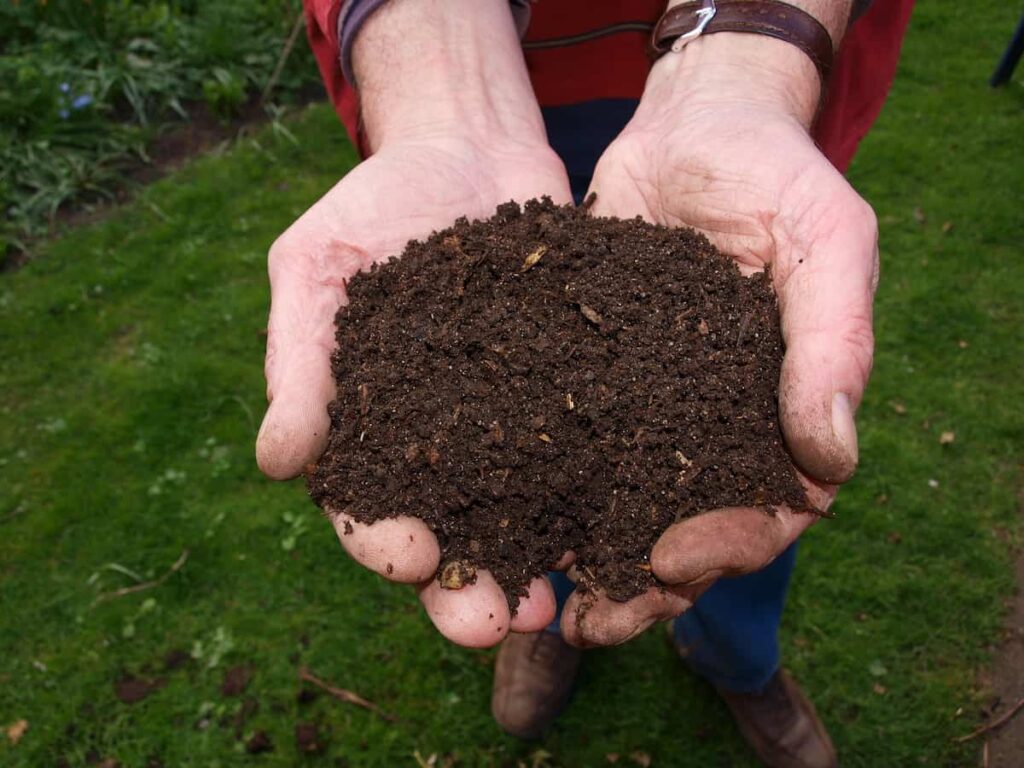
The pH level of Coco Peat should be checked before planting. Most plants prefer a slightly acidic environment, so if the Coco Peat is too alkaline, it can be amended with some peat moss or sulfur. You can use a soil testing kit or strips to test the pH level.
Properties of Coco Peat
- Cocopeat is organic and biodegradable, with a life span of up to 3-4 years.
- Its pH is slightly acidic to neutral, between 5.2-7, which benefits the plant’s growth.
- Thanks to its porous nature, it helps in healthy root development.
- It can retain moisture up to 6-8 times more than regular garden soil.
- Cocopeat has good aeration and drainage.
- It consists of a considerable amount of nutrients, including nitrogen, phosphorus, potassium, magnesium, and zinc, that are beneficial for plants.
Can Coco Peat be used for all plants?
Coco Peat is a by-product of the processing of coconut fiber. It is made up of short, fine fibers and resembles soil in texture. Although it is an organic material, Coco Peat is often used as a growing medium in place of soil or potting mix. Coco Peat can be used for all plants, including houseplants, succulents, and cacti. It has excellent drainage properties and does not compact like soil, so it is ideal for plants that prefer a well-aerated growing medium. Additionally, Coco Peat retains moisture well and can help prevent root rot in plants susceptible to this condition.
Where to use Coco Peat?
- It can be used mainly as a growing medium in potting mixes or on its own as a hydroponic medium. Coco Peat can help improve drainage and aeration while retaining moisture when used in potting mixes. It can also be used to make your potting mix.
- To make your Coco Peat potting mix, mix equal parts Coco Peat and compost. You can also add in some perlite or vermiculite for extra drainage.
- If you want to use Coco Peat on its own as a hydroponic medium, it’s essential to soak it carefully in water before using it. This will help it expand and become more absorbent.
- It is a fantastic sowing medium.
- Cocopeat is a perfect rooting medium. Stem cuttings are inserted in the Coco Peat for root induction.
- Cocopeat is suitable for hydroponic farming.
- It is an essential ingredient of various potting media, such as pot-o-mix and organic veggie-mix.
- Potting mixture with added Coco Peat is suitable for indoor plants, cacti and succulents, dish gardens, terrariums, and hanging baskets.
In case you missed it: Organic and Chemical Solutions to Get Rid of Potato Scab: Symptoms, Causes, and Treatment
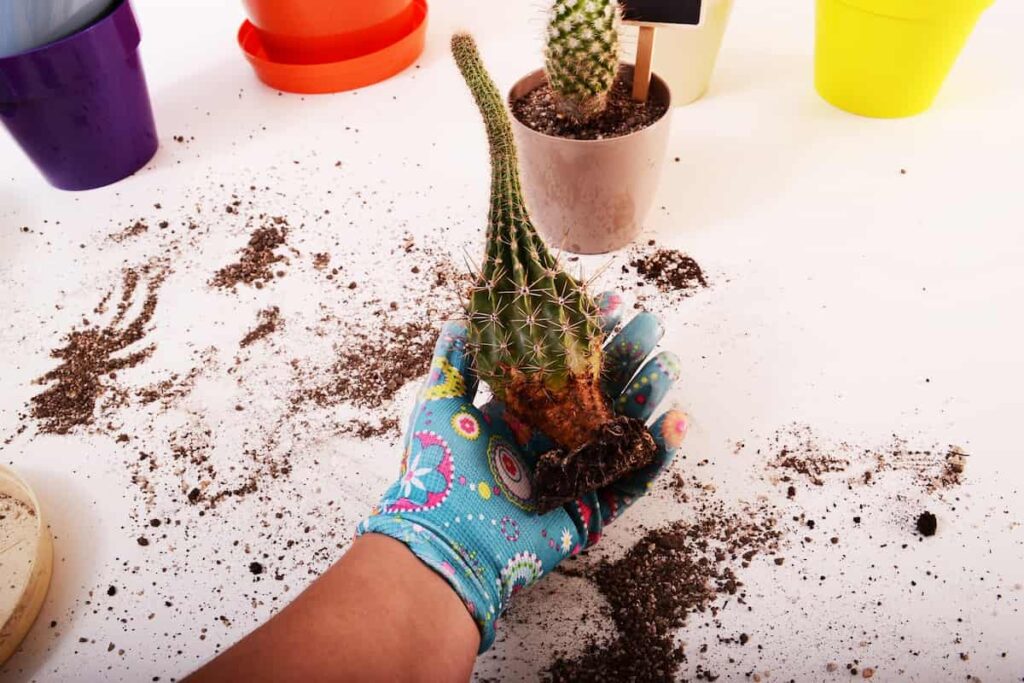
Is Coco Peat better than soil?
- When it comes to growing media, Coco Peat is often touted as being superior to the soil. Coco Peat, also known as coir dust, is a by-product of the coconut industry. It’s made from the leftover fiber after coconuts are processed for their meat and water. This fiber is then dried and ground into a fine powder.
- Coco Peat has several advantages over the soil. For one, it’s extremely lightweight and easy to transport. It also holds onto moisture very well, making it ideal for drought-prone areas. Additionally, Coco Peat is rich in nutrients and provides an excellent plant growing environment.
Step-by-step process to make Coco Peat for plants
Assuming you have all the materials required, making Coco Peat is a simple process that can be done in a few hours.
- Start by soaking the coco coir in water for about 30 minutes. This will help to soften it and then make it easier to work with
- Once the coco coir is softened, begin tearing it into smaller pieces. The smaller the pieces, the easier it will be to break down into Coco Peat.
- Once you have torn the coco coir into small pieces, place it in a large container or bin.
- Begin breaking down the coco coir even further by stomping on it or using a garden hoe or other tool. Continue until the coco coir is broken into a fine powder or dust.
- Once the coco coir is finely ground, add water to it and mix well until you have created a mud-like consistency.
- Place the mud-like mixture onto a tarp or piece of plastic and spread it out evenly. Allow the mixture to dry in the sun for several hours or until it becomes crumbly and dry to the touch.
- Once dry, your homemade Coco Peat is ready to use! You can add it to potted plants or use it as mulch in your garden beds.
In case you missed it: How to Make Potting Soil at Home: Process, Steps, and Guide for Beginners
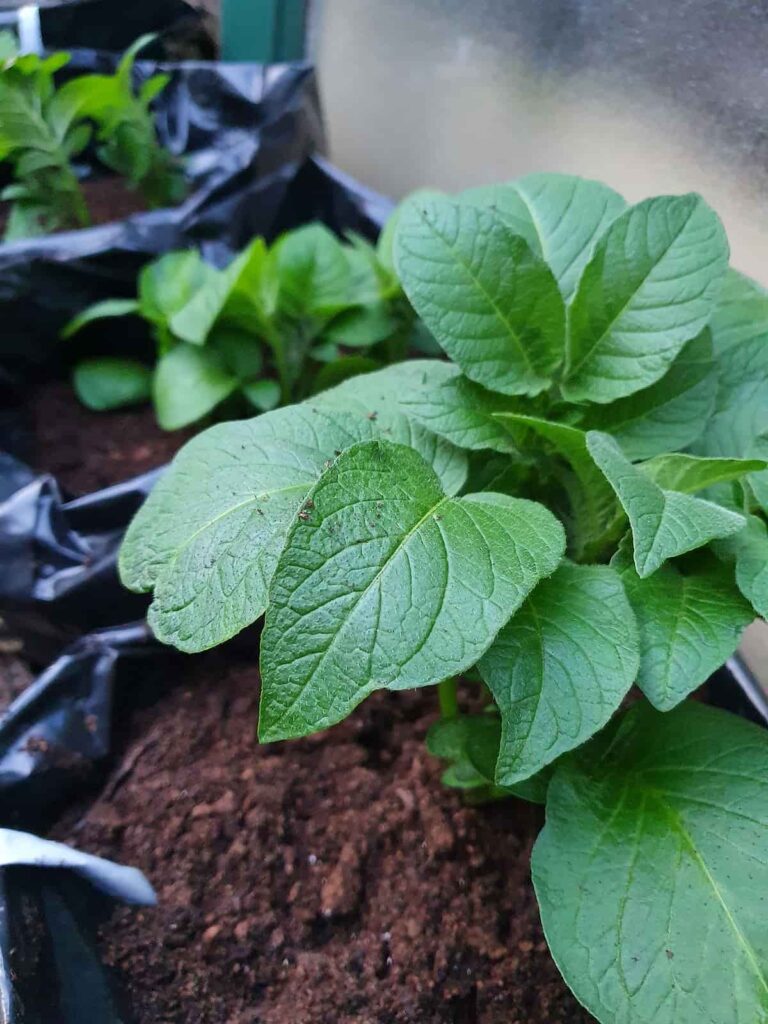
Types of Coco Peat for Plants
You can use coir as peat moss. It often comes pressed into bricks, which must be soaked to break them. This product is also found in soil, known as coir dust, and is used to grow exotic plants such as ferns, bromeliads, anthuriums, and orchids. Cocoa fiber is a brick mixed with soil to create air pockets that deliver oxygen to plant roots. Coconut chips are available and hold water while aerating the soil. Combining these allows you to create the type of medium each plant needs.
Benefits of Coco Peat in gardening
It is an excellent growing medium for plants. It is made from the fiber of coconut husks and is 100% natural and biodegradable. Coco Peat has many benefits for plants, including:
- It retains moisture well, making it ideal for watering plants.
- It is lightweight and easy to handle.
- It is free of harmful chemicals and toxins.
- It provides Plants with a good source of nutrients.
- It encourages root growth.
- It improves drainage and aeration in the soil.
Uses of Coco Peat in plants
Coco Peat is a versatile growing medium used for various plants. It is made from the husks of coconuts, which are ground up and compressed into a block. When it is soaked in water, it expands and can be used as a potting mix or added to soil to improve drainage. Coco Peat retains moisture well, making it ideal for watering plants. It also provides aeration and drainage, which helps roots grow strong and healthy.
Additionally, Coco Peat is rich in nutrients, providing plants with the food they need to grow. There are many ways to use Coco Peat in your garden. You can use it as a potting mix for indoor and outdoor plants, add it to your soil to improve drainage, or make your compost. No matter how you use it, Coco Peat will give your plants the nourishment they need to thrive.
How long does Coco Peat last?
Coco Peat is light, easy to handle, and can be reused for up to 4 years. Coco Peat physical and biochemical properties make it resistant to bacterial and fungal growth. Coco Peat slowly disintegrates. It begins to break down only at the age of ten, thus providing long-term benefits.
Tips for using Coco Peat for plants
Coco Peat is a versatile growing medium used for various plants. It is made from coconut husks and is an excellent alternative to traditional potting mixes. Coco Peat holds moisture well and is also aerated, which makes it ideal for growing plants. To use Coco Peat for plants, mix it with water until it is evenly moistened. Then, fill a pot or container with the Coco Peat mixture and plant your desired plant. Water regularly as needed. Coco Peat can also line hanging baskets or other containers before planting
In case you missed it: Compost Tea Recipe for Your Garden Plants: How to Prepare and Apply
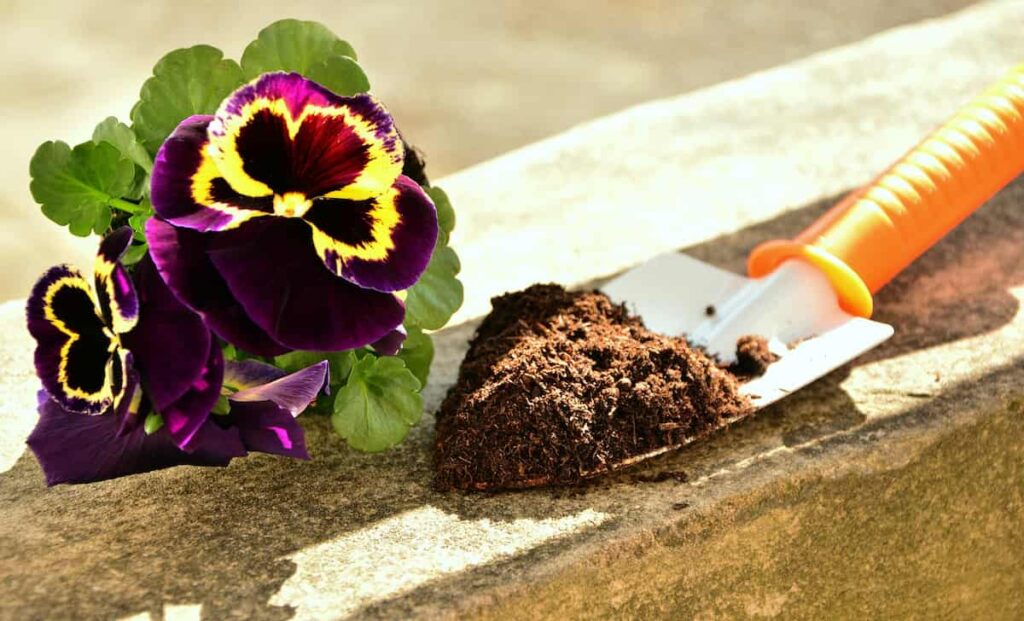
How to prepare Coco Peat for seed germination
To prepare Coco Peat for seed germination, you’ll need the following:
- A block of Coco Peat
- A sharp knife
- A container or tray
- Water
Firstly, use the knife to cut or break the Coco Peat into small pieces that will fit into your container or tray. Next, soak the Coco Peat in water for 15-30 minutes or until it’s fully saturated. Once it’s saturated, drain off any excess water and let the Coco Peat settle. Now it’s ready to use. You can sow seeds directly into the moistened Coco Peat or place the seeds on top of the media and lightly cover them with more Coco Peat. Keep the media moist – but not wet – and in a warm location until germination occurs.
Steps to make Coco Peat from green coconut
Assuming you have the green coconuts with you, the first step is to husk them. You will want a sharp knife and a coconut husk removal tool. First, cut off the coconut’s top so that you get a flat surface to work. Next, use the knife to score the coconut shell in a circle around its circumference. Finally, insert the husk removal tool into the scored area and twist it until the husk comes off. Next, remove the inner flesh of the coconut.
For this, you will need a blunt knife and a spoon. First, use the blunt knife to break open the coconut along its natural cracks. Next, use the spoon to scoop out all of the flesh from inside the shell. Once all of the flesh has been removed, rinse off any remaining bits with water. The final step is shredding or chopping the flesh into small pieces using a sharp knife or food processor. And that’s it! Your Coco Peat is now ready to be used as desired.
Tips for using Coco Peat for potted plants
Coco Peat is a popular substrate for potted plants. It is made from the fiber of coconuts and is an excellent growing medium for many plants. Coco Peat is lightweight, holds moisture well, and drains well. It also provides good aeration for roots and is resistant to compaction. Below are some tips for using Coco Peat in potted plants:
- Mix half Coco Peat and half perlite or sand when potting plants. This will provide good drainage while still holding moisture.
- To avoid compaction, fluff the Coco Peat before adding it to the pot.
- Coco Peat can be used as a top dressing for pot-growing plants. Just sprinkle a layer on top of the soil and water as usual.
- Mix in fresh Coco Peat when repotting plants to replace any broken down.
In case you missed it: Pest and Disease Management in Sugarcane: Causes, Symptoms, Chemical, and Biological Control
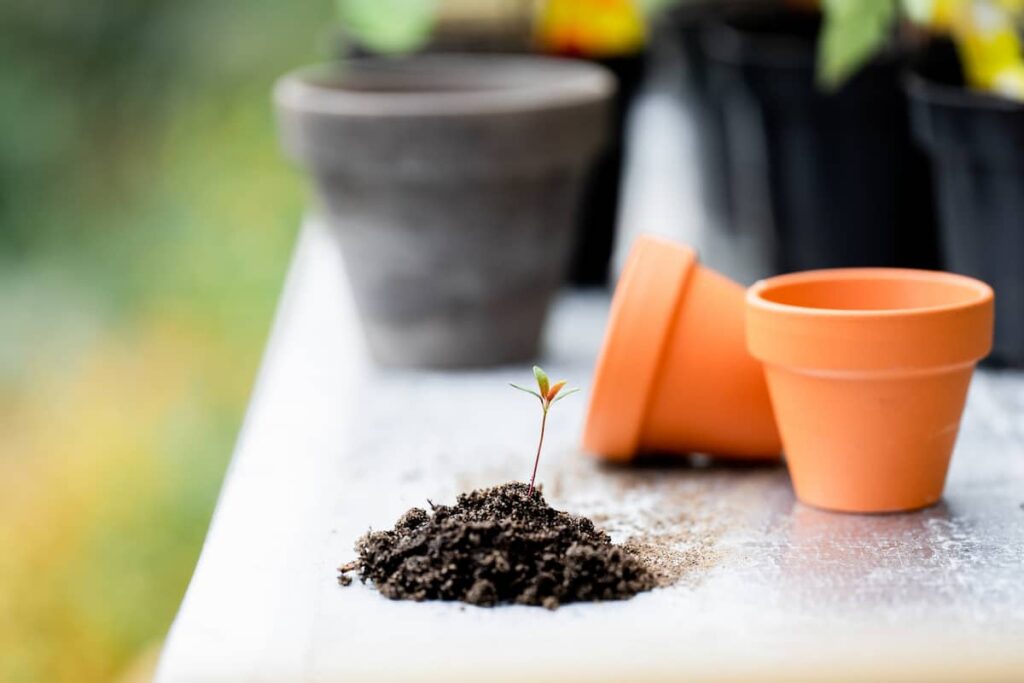
How to store Coco Peat?
Coco Peat is a versatile growing medium that can be used in various ways. It is made from the fiber of coconut husks and is an environmentally friendly alternative to peat moss. Coco Peat has excellent water retention capabilities and can be used as a potting mix, soil amendment, or hydroponic growing medium. When stored properly, Coco Peat can last for several years.
To store Coco Peat, place it in a dry, airtight container out of direct sunlight. If possible, store Coco Peat in a cool, dark place to prolong its shelf life. You can also add a desiccant packet to the container to absorb any moisture that may accumulate over time.
Difference between Coco Peat and peat moss
When it comes to Coco Peat and peat moss, there are a few key differences that you should be aware of. For starters, Coco Peat is made from the husks of coconuts, while peat moss is derived from decomposed plant matter. As a result, Coco Peat is much more absorbent than peat moss and contains more nutrients. Additionally, Coco Peat is pH-neutral, while peat moss is slightly acidic.
Coco Peat is made from the fiber of coconut husks and is a renewable resource. Peat moss, on the other hand, is a non-renewable resource made from decomposed plant matter. Coco Peat is also more absorbent than peat moss and holds more water, making it ideal for use in gardens or potting mix. Peat moss has a lower pH than Coco Peat, so it can be used to lower soil pH.
Conclusion
Cocopeat is a natural by-product of coconut harvesting. It’s an environmentally friendly alternative to peat moss with many applications, including gardening, hydroponics, and even filtration. Coco Peat is an excellent option if you’re looking for a sustainable way to improve your garden or farm.
- How to Build a Low-budget Goat Shed: Cheap Ideas and Tips
- Goat Farming Training Programs in India: A Beginner’s Guide
- Types of Pesticides Used in Agriculture: A Beginner’s Guide
- Economical Aquaculture: A Guide to Low-Budget Fish Farming
- 15 Common Planting Errors That Can Doom Your Fruit Trees
- How to Make Houseplants Bushy: Effective Tips and Ideas
- Innovative Strategies for Boosting Coconut Pollination and Yield
- Pollination Strategies for Maximum Pumpkin Yield
- The Complete Guide to Chicken Fattening: Strategies for Maximum Growth
- Natural Solutions for Tulip Problems: 100% Effective Remedies for Leaf and Bulb-Related Issues
- Revolutionizing Citrus Preservation: Towards a Healthier, Greener Future
- Natural Solutions for Peony Leaf and Flower Problems: 100% Effective Remedies
- Maximizing Profits with Avocado Contract Farming in India: A Comprehensive Guide
- Natural Solutions for Hydrangea Problems: 100% Effective Remedies for Leaf and Flowers
- The Ultimate Guide to Choosing the Perfect Foliage Friend: Bringing Life Indoors
- From Sunlight to Sustainability: 15 Ways to Use Solar Technology in Agriculture
- The Ultimate Guide to Dong Tao Chicken: Exploring from History to Raising
- The Eco-Friendly Makeover: How to Convert Your Unused Swimming Pool into a Fish Pond
- Mastering the Art of Delaware Chicken Farming: Essentials for Healthy Backyard Flocks
- 20 Best Homemade Fertilizers for Money Plant: DIY Recipes and Application Methods
- How to Craft a Comprehensive Free-Range Chicken Farming Business Plan
- Brighten Your Flock: Raising Easter Egger Chickens for Beauty and Bounty
- How to Optimize Your Poultry Egg Farm Business Plan with These Strategies
- Subsidy for Spirulina Cultivation: How Indian Government Schemes Encouraging Spirulina Farmers
- Ultimate Guide to Raising Dominique Chickens: Breeding, Feeding, Egg-Production, and Care
- Mastering the Art of Raising Jersey Giant Chickens: Care, Feeding, and More
- Ultimate Guide to Raising Legbar Chickens: Breeding, Farming Practices, Diet, Egg-Production
- How to Raise Welsummer Chickens: A Comprehensive Guide for Beginners
- How to Protect Indoor Plants in Winter: A Comprehensive Guide
- Ultimate Guide to Grow Bag Gardening: Tips, Tricks, and Planting Ideas for Urban Gardeners
- Guide to Lotus Cultivation: How to Propagate, Plant, Grow, Care, Cost, and Profit
- Agriculture Drone Subsidy Scheme: Government Kisan Subsidy, License, and How to Apply Online
- Ultimate Guide to Raising Araucana Chickens: Breed Profile, Farming Economics, Diet, and Care
- Bringing Hydroponics to Classroom: Importance, Benefits of Learning for School Students
- Ultimate Guide to Raising Polish Chickens: Breed Profile, Farming Economics, Diet, and Care
- Ultimate Guide to Raising Australorp Chickens: Profile, Farming Economics, Egg Production, Diet, and Care